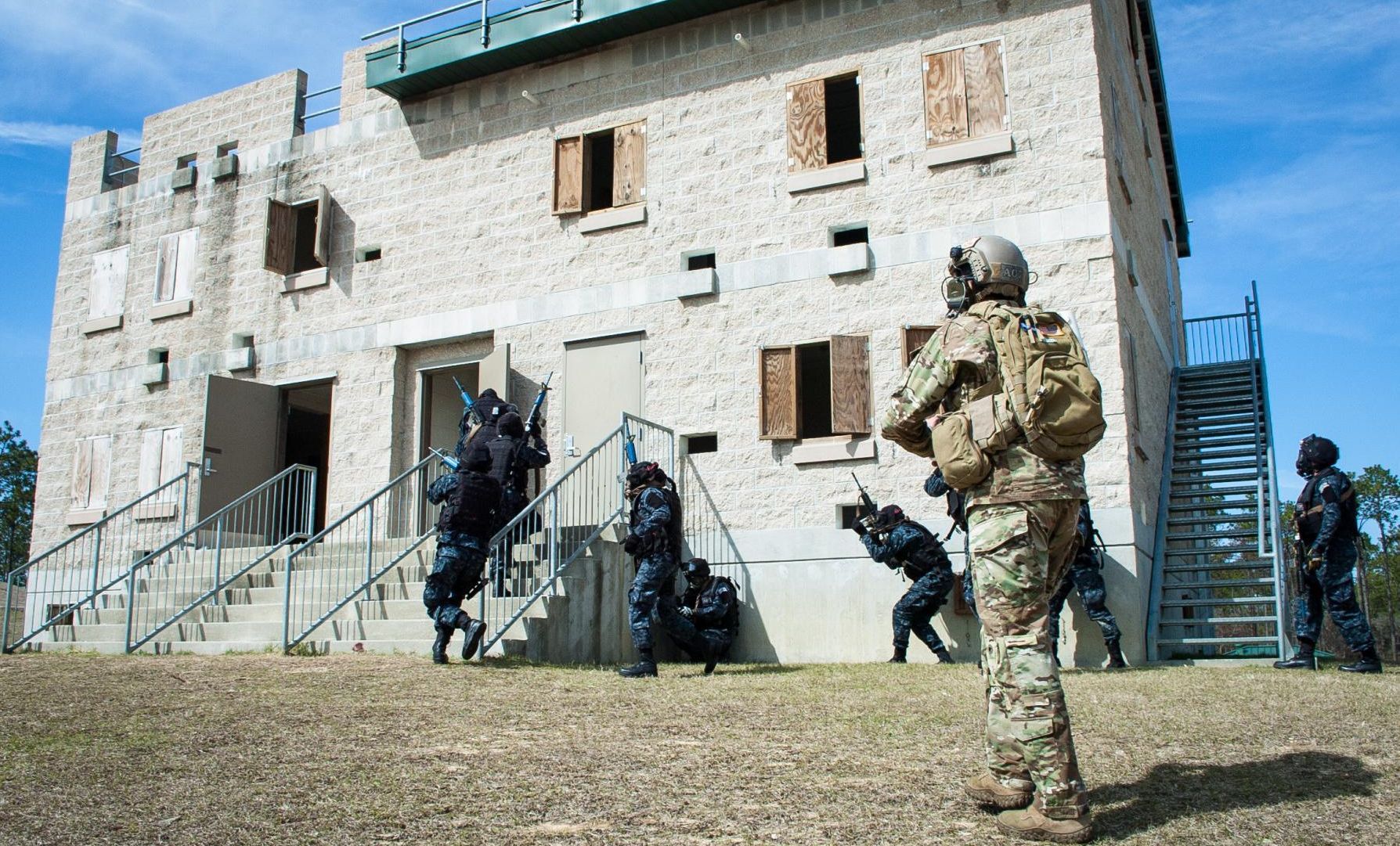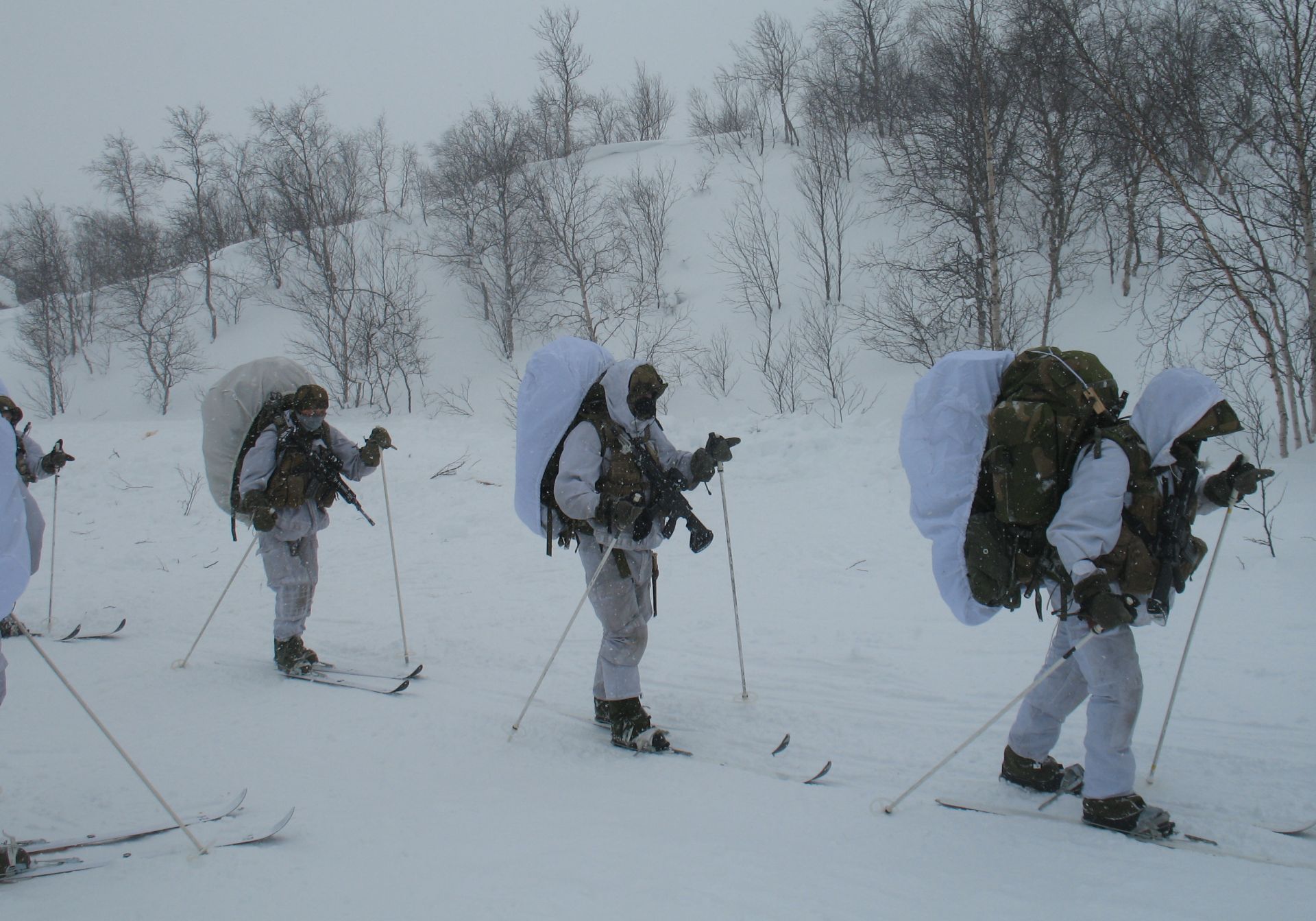A Honduran force skilled in combating criminal organizations and countering human and narcotic trafficking recently trained with Special Forces Soldiers on the ranges of Eglin Air Force Base, located in Northwest Florida.
Green Berets, from the 7th Special Forces Group (Airborne), hosted members of the Honduran Tigres, whose name translates into “intelligence and special security response groups units,” during the final two weeks of February to mentor and coach them in tactics and methods they will use to fight narcotics and human trafficking in their country.
The curriculum, authored by the detachment tasked with training the Tigres, called for a mixture of training in marksmanship and urban combat, known commonly as close quarters battle. Many periods of instruction focused on instilling fundamental principles of close quarters battle and knowing how to execute them amidst the chaos that is combat.
It is very important that the Tigres are training with the Special Forces Soldiers, said a senior Tigres officer, who asked not to be identified due to his position. From this training, Tigres are learning tactics they can use against organized crime in Honduras, he said.
The most important thing the Tigres are learning, continued the Tigres officer, are these new tactics. The knowledge these Tigres already possessed, when they arrived, has been greatly improved because of this training, and the partnership between the Tigres and the Special Forces.
Training often involved utilizing multi-story buildings and paintball-like ammunition, requiring participants to wear gas masks to protect their face from serious injury. The sting of the round against skin, even through clothing, was an effective tool at demonstrating mistakes firsthand.
Training was made even more complicated by a key feature of the shoot-house used primarily by the Special Forces Soldiers; moveable walls.
Nearly each time a Tigres squad assaulted the building, an entirely new layout awaited them. What was a wall on a previous mission could be a new hall or doorway, presenting a new danger where there was not one before. This rearrangement of the floor plan required the Tigres to rely on the training they were receiving from the Green Berets rather than their memory.
“Estas muerto! You are dead!” translated into Spanish, was shouted many times by instructors to Tigres who forgot a fundamental of their training or were struck by a paintball. A fellow Tigres would then move in, load the simulated casualty onto their shoulders and continue the mission through the shoot-house, all with the added discomfort of the gas mask and the restrictions on breathing and vision it imposed.
Through their shared adversity, a bond between the instructors and students developed. Many of the Tigres traveled to the training with preconceived notions of how a Special Forces detachment operates and acts. What they experienced, however, is the hallmark of the Special Forces and what makes them unique among America’s Special Operations Forces.
Foreign Internal Defense, the training of a foreign force to improve their skills and operations, is the primary mission of the Special Forces. Throughout the training, the Hondurans learned Special Forces Soldiers are primarily coaches and teachers, not just warfighters. Each of the 7th Special Forces Group (Airborne) Soldiers, even those acting as the opposing force to the Hondurans and responsible for barraging them with paintballs, eagerly sought to improve the Tigres’ performance, most times mentoring them in their own language.
“It’s not just what they see in movies. The Tigres sometimes want a tactic that seems fashionable, but that’s not what always applies,” said a senior non-commissioned officer, who requested not to be identified because of his work in the Special Forces. “We’re trying to teach them it’s the simple things, the basics. When you’re really good at the basics, only then can you be truly effective in your operations.”
The training culminated in an exercise testing everything the Tigres had been taught the previous two weeks. Minimal guidance was offered by the Green Berets as the Hondurans received a mission, planned their actions, and assaulted their objective on the range of Eglin Air Force Base, containing multiple buildings and derelict vehicles. Intelligence gleaned off a detainee role-played by a Green Beret, led the Tigres to a secondary objective – another series of compounds with multiple buildings to clear and enemies to engage.
“Here’s what’s most important; the partnership. The partnership of you with us,” said. Col. Christopher Riga, commander of the 7th Special Forces Group (Airborne), to the Tigres during a closing ceremony for the training. “I promise you at some point in time, together, we’ll be on target killing terrorists and drug traffickers together.”
“There’s no greater partner that’s accomplished more in a little over two years than you,” Riga said. “I can never say enough words to tell you how proud I am of you, how proud I am of all of our guys, and the great partnership we will maintain and the work we will do together for a secure and stable Honduras.”











